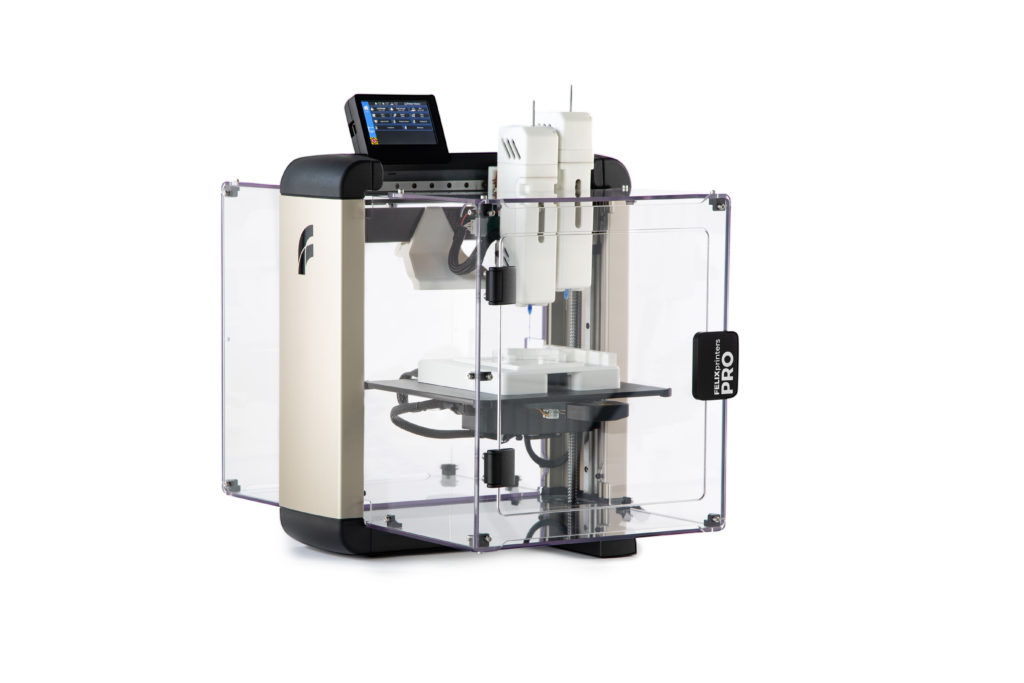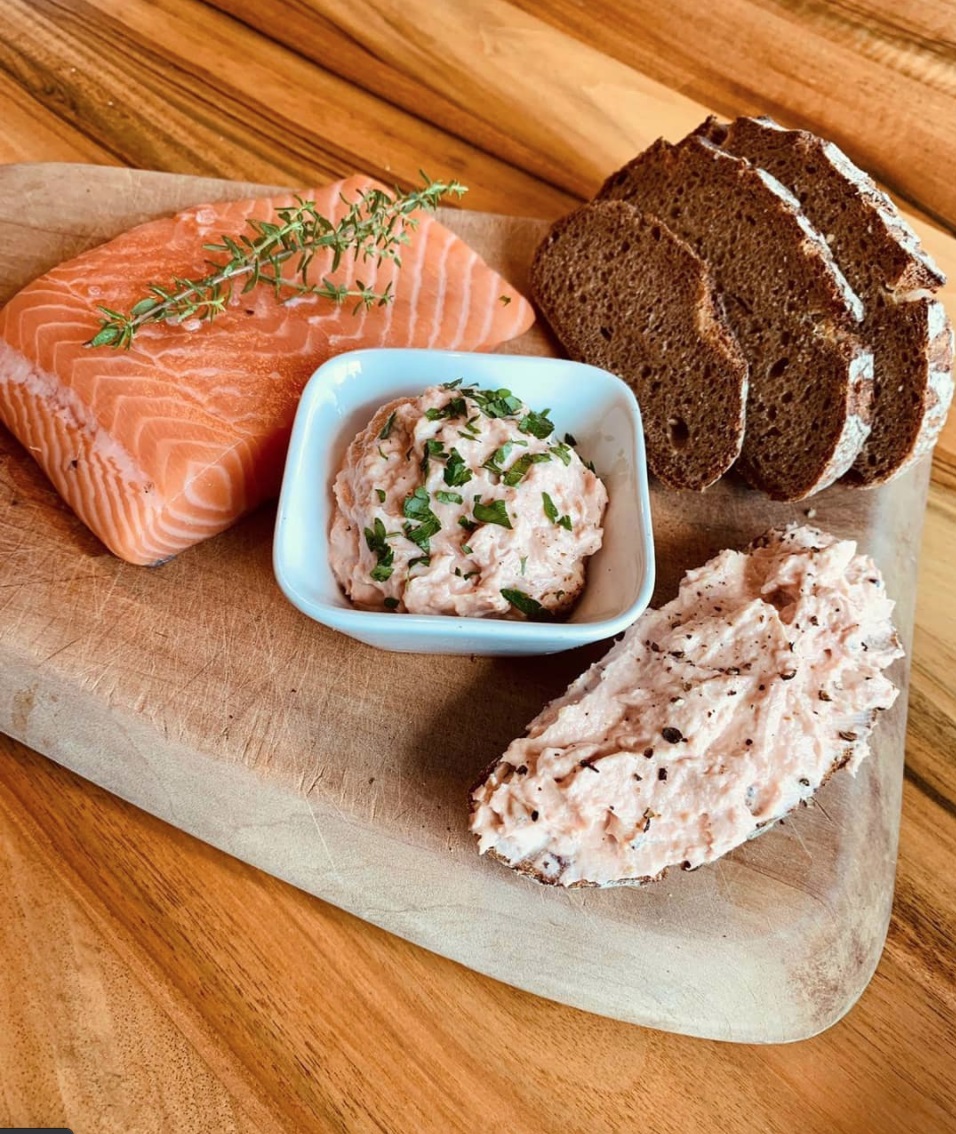China3D printingNet July 29th, Legendary Vish, a plant-based seafood startup, is3D printingThe commercialization of vegan salmon fillet is aimed at providing healthier and more delicious alternatives to existing fish.The company will work with the Netherlands3D printingThe machine manufacturer FELIXprinters cooperated to produce the unique complex appearance, texture and color distribution of salmon fillets. For such a market segment, this is a big step towards the market, especially as many fisheries in the world are struggling to keep up with the growth of seafood consumption, they are operating at an unsustainable level.
3D printingThe launch of Salmon was announced a few months after Vish was founded, and these students are working together in a project led by the European Union (EU). In 2017, the co-founders Robin Simsa, Theresa Rothenbücher and Hakan Gürbüz were selected as Mary Curie Early Researchers (ESR) for the Training4CRM project of the international consortium, which aims to use3D printingTechnology development of cell-based regenerative drugs for neurodegenerative diseases.While exploring cell-based treatments, the research team realized that similar techniques could be applied to3D printingOf plant-based protein. Then, they discovered that seafood products had gaps in fish products with a more vegan structure and began to develop plant-based alternatives.

The founding team of Legendary Vish: CSO Theresa Rothenbücher, CEO Robin Simsa and technical director Hakan Gürbüz (picture provided by Legendary Vish)
Legendary VishMeans: yesThe best way to replace proteins to make a meaningful impact is whether they can also reproduce the cooking experience of high-value animal products such as steak or fish fillets. 3D printingThe method is to create the most promising technology for this new generation of high-value alternative protein products, and we believe that this market will grow on a large scale in the future. Our plan is to expand production facilities and first sell our products through partner restaurants in different European cities.To this end, we developed our own3D printingA large part of the technology, and the scale of the upgrade largely depends on the modular system we use. “

Robin Simsa tries to use Legendary Vish3D printingVegan salmon fillet (picture provided by Legendary Vish)
According to China3D printingNetwork understanding,
In addition to providing nutrients needed by vegetarians, Legendary Vish’s3D printingFish does not rely on traditional fishing methods, and can reduce greenhouse gas emissions, ocean consumption and toxic water quality, mainly due to the use of antibiotics, aquaculture salmon in fish farms.In response to these environmental challenges, the co-founder of this Vienna-based startup was forced to create a new product that could use the extrusion-based development developed in the Training4CRM project3D printingTechnology to replace fish.
As one of the three business partners of the consortium, FELIXprinters’ mission is to develop and provide3D printingA platform that can create the necessary cell arrays for regenerative medicine treatments.New hybrid3D bioprintingThe machine was originally designed by Gürbüz and launched in May 2020. It is capable of performing all types of bioprinting research and printing complex adhesives and proteins into plant-based fish substitutes. According to Legendary Vish, it is impossible to use traditional technology to manufacture seafood with complex structures, so they decided to rely on technology that they had known in the past.
FELIXprinters has become a major player in providing mid-priced industrial additive manufacturing (AM) machines, which are widely used in many industries for challenging AM production applications. Nevertheless, the company decided to accept the challenge of developing the first bioprinter.The device is built on the rack of the FELIXprinters product line. The product has been serving manufacturers for 9 years and has a modular design, which means it can be converted very quickly3D printingmachine.
“The FELIX BIOprinter is suitable for all types of bioprinting research and is equipped with a powerful motor that can extrude a variety of materials with different viscosities, which is invaluable when simulating the look and feel of salmon,” said co-founder Wilgo Feliksdal . BIOprinter is composed of an adaptable and flexible ecosystem to ensure that it can meet the needs of a wide range of researchers without incurring unnecessary costs. We are very happy that it has become the core of the work done by Legendary Vish. “
The new FELIX BIOprinter (picture provided by FELIXprinters)
With the help of BIOprinter’s AM process, it is possible to complete the bio-printing of fish fillets with all qualities of simulated fish meat. This process can use different printing heads to squeeze out a variety of plant-based bio-inks. This helps to reproduce the appearance of salmon fillets, especially the distribution of orange and red flesh tissue, as well as the density of white connective tissue and muscle fibers.
“Imitating the taste and aroma of fish is the quality that we have optimized (testers cannot tell the difference in taste through blind methods), but we know that the next step must be to deal with texturing technology. Food3D printingIs a relatively new field,3D printingMany of the available components/modules of the machine were originally produced for classic polymer printing.3D printingThere are different design requirements, so we need to innovate and create new components that meet our needs for plant protein organization. This is an ongoing process and we are working with different academic and industry partners to improve our products. Currently, we are studying different machine learning strategies to improve the reliability and effectiveness of the production process. “
Simsa and his co-founders believe that the alternative protein market will continue to be the leading trend in the food industry in the next few decades and will gain a large portion of the current market share of animal products. Although Legendary Vish’s marketing strategy currently focuses on environmental and health benefits, the next step will also include price concessions. As the difference between plant-based meat and animal-based meat becomes larger, cheaper prices will drive demand.
Legendary Vish tested its new salmon flavor in a plant-based spread (image courtesy of Legendary Vish)
Simsa said that although we don’t know how many years it may take for the food trend to completely shift to alternative fish products, the ongoing pandemic reminds people of the fragility of the food production system, especially the sensitivity of the supply chain. He believes that localized and regionalized production methods will become more and more important in the future. In this sense,3D printingWill make the supply chain shorter.
China3D printingNet compile article!
(Editor in charge: admin)


0 Comments for “3D printed vegan salmon will be commercialized with the help of FELIXprinters”